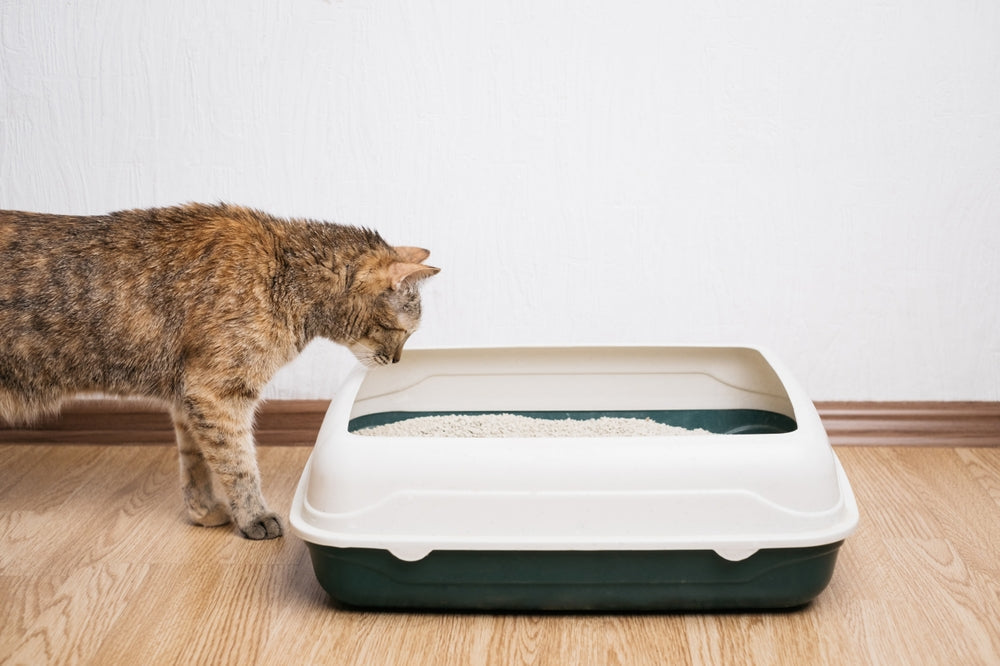How to Switch Your Cat to a New Litter Brand Without Issues

Changing your cat’s litter isn’t always as easy as swapping out one box for another.
Some cats don’t care.
Others? They’ll skip the litter box entirely if something feels even a little different.
If you’re trying to switch your cat to a new litter brand, going too fast can lead to messes and frustration.
Here’s how to make the switch without turning your bathroom into a battleground.
Key Takeaways
-
Cats notice small changes in texture, scent, and dust
-
Switching too fast can cause litter box rejection
-
A slow transition over 7 to 10 days works best
-
Watch your cat’s behavior while you switch
-
Use unscented, low-dust litter for fewer issues
Why Some Cats Hate New Litter
Cats are creatures of habit.
The litter box is one of the few places they want to feel predictable and safe.
If the scent or texture of the litter changes suddenly, some cats may:
-
Avoid the box
-
Go elsewhere in the house
-
Scratch outside the box
-
Seem stressed or confused
It’s not defiance — it’s discomfort.
Even small changes like switching from a scented to an unscented formula can trigger a reaction.
How to Switch Litter Without Issues
Start with the right kind of litter
Not all litter types are easy to adjust to.
You’ll want something that:
-
Feels soft under their paws
-
Is unscented (strong smells can overwhelm them)
-
Has low dust
-
Clumps tightly so it stays clean
Boxie is a good option because it’s a simple, fragrance-free litter that most cats can accept.
Use the slow mixing method
Don’t change the litter all at once.
Start by mixing a small amount of the new litter into the old litter your cat already uses.
Use this schedule:
-
Days 1–3: 25% new, 75% old
-
Days 4–6: 50/50 mix
-
Days 7–9: 75% new, 25% old
-
Day 10+: 100% new litter
Go slower if your cat seems unsure.
No need to rush.
Keep the box clean
While you're switching, keep the box as clean as possible.
Scoop daily.
A dirty box plus unfamiliar litter is a recipe for rejection.
Don’t change anything else
Keep the litter box in the same location.
Don’t try a new food or new box style at the same time.
Let your cat adjust to one change at a time.
Watch their behavior
Most cats adapt just fine if the transition is slow.
But watch out for:
-
Peeing outside the box
-
Crying or pacing
-
Not covering their waste
-
Sniffing but refusing to go
If anything seems off, slow down.
You can even pause and go back a step.
Here's more about Why Your Cat Might be Peeing Outside the Litter Box?
Extra Tips for a Smooth Transition
-
Use the same type of litter box they’re used to
-
Avoid scented litter during the switch
-
Offer praise when they use the box
-
Don’t punish accidents — just clean thoroughly and adjust
-
If possible, set up two boxes: one old, one with the new litter
Why Litter Type Makes a Big Difference
The easier it is for your cat to accept the new litter, the smoother this will go.
Litter with heavy perfume, coarse texture, or too much dust can be a turn-off.
A clumping, fragrance-free, low-dust option is almost always the safest bet.
That’s why many cat parents choose Boxiecat when switching brands — it’s clean, consistent, and simple.
Once your cat gets used to it, you won’t have to worry about changing again anytime soon.
FAQ
How do I switch my cat to a new litter brand?
Start with 25% new litter mixed into the old.
Increase the ratio every few days until you’ve made a full switch over 7–10 days.
Why did my cat stop using the litter box after I changed litter?
They may dislike the scent or texture.
Try mixing more of the old litter back in and go slower.
Can I switch litter brands overnight?
You can, but it’s risky.
Sudden changes often cause stress or rejection.
A gradual change is safer.
What type of litter makes switching easier?
Look for unscented, low-dust, clumping litter with a soft texture.
Something similar to what your cat is already used to.
Is Boxiecat good for switching?
Yes.
It’s fragrance-free, dust-free, and easy for cats to adjust to.
It also clumps well, which helps keep the box clean during the transition.
Keep in Mind
Most litter switches go fine—if you take it slow.
Watch your cat, stick with a routine, and keep the box extra clean.
If something seems off, back up a step.
It’s better to go slow than to deal with litter box issues later.
Cats aren’t being stubborn when they reject new litter—they’re being cautious.
Respect that, and you’ll both be better off.
- Tags: Litter 101

